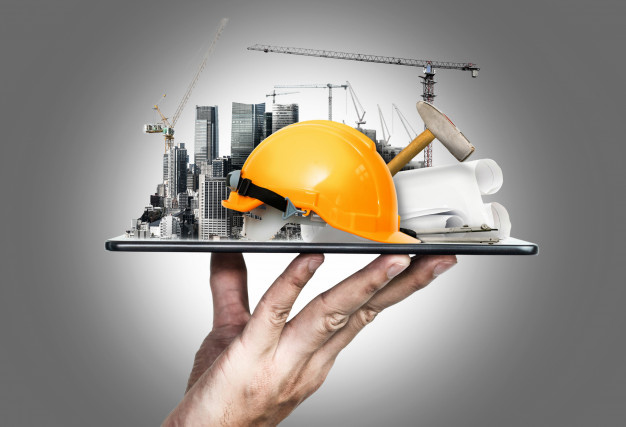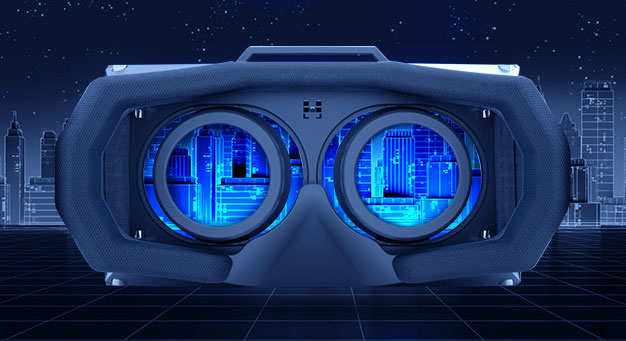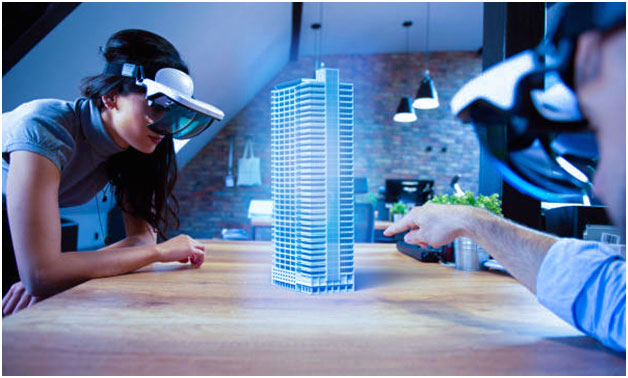The construction industry is gradually transitioning from the conventional ways to a technically advanced digitized mode of construction. Cutting-edge technologies like BIM and VR plays a crucial role in this digital transformation of the industry. From conceptual design to construction, BIM with VR increases accuracy, safety, efficiency, and overall project life-cycle of the project.
Using VR technology, architects and design professionals can easily showcase their vision to their clients even before construction starts. A client or user can experience the space in any way they choose. The demand to complete the project within time and budget is moving many realtors to adopt these technologies. They are leveraging BIM and VR to save time, minimize errors, reduce rework, and generate a long-term return on investment.
Challenges in the construction industry before project teams

Building construction is a multi-disciplinary approach and needs to consider several factors to deliver the project effectively. Therefore, a project team has to face several challenges all-through the project cycle. During the planning and designing stage, designers and architects need to get an accurate view and insight of the end-user regarding the design choice and space usage. In the conventional 2D method, architects help the user explore the design and express the space ideas. It loses the direct engagement of the user. Therefore, it is difficult to get the user perspective in terms of architectural issues, MEP planning, aesthetics, space planning, usage, etc.
The model needs to get integrated with different layers of plans like architectural, structural, mechanical, electrical, etc., to identify the construction issues. And with a 3D model and using conventional tools, it’s hard to discover the entire potential construction issues. Also, multi-discipline collaboration and communication are required to support decision making and further resolve ergonomics, constructability, and aesthetics issues of a project.
Thus, an early-stage detection of potential design issues and risk assessment, smooth communication and collaboration between project stakeholders, end-user visualization and input, efficient and on-time decision making, etc., is required to get an optimized design, handle construction challenges, and deliver the project on time and within budget.
Challenges for the marketing & sales team

The marketing and sales team faces several hurdles to convenience the clients or their potential buyer when the construction has not started or finished. Digitally advanced technologies are required to help the buyer visualize and give a glimpse of the future building. Viewers usually face surprises when the product is finally delivered to them, as the images often give them a mistaken perspective of the space or the future building.
It requires immersive and interactive technology to develop trust among the buyer and boost sales. Viewers need access to reliable information to emotionally engagement and drive them for investment. A clear visualization assists them in giving their inputs and customize the property to their requirement.
The Sales team often losses their productivity due to regular visits and traveling. This obstacle of the sales professionals can get removed by a virtual tour of the property with VR tools. It saves their time and boosts productivity. Even for the built property, a virtual tour would give a better comprehension of the project.
How BIM & VR addressing construction industry challenges

The adoption of BIM has already changed the industry and the way of working. The 3D model with integrated parametric information, the collaboration between designers through software interoperability, integration between processes and sustainability, etc., have improved productivity and performance. Interaction of BIM with VR technology allows designers and architects to a fully immersive 3D experience of a building and access to all the relevant information. VR has features like a motion picture in reality and mixed reality and can be used at various stages of the design process and different LOD (level of detail). With BIM, VR is addressing several construction industry challenges.
Project planning and design
VR is an intuitive tool featuring leap motion that allows the architects to use their whole body to create the design. Here, the designer intuitively sees the elements of the model in scale. They can analyze aesthetics like proportions, symmetry, unity, etc. Using VR tools, the materials can be placed, changed as per the scale of the environment. Therefore, the placement of elements in a virtual environment enables the designer to express their ideas of the model, discover potential issues and design flaws, and create a better plan to convince their clients.
When VR gets used as an empathic design approach, the user’s input and feelings are valued and considered. Users are allowed to take measures, suggest bookmarks, and make notes based on their interaction with the design to optimize the design and its ergonomics.
Early risk assessment and clash detection
BIM has already taken a step towards detecting layout conflicts and risk assessment in the design model. But the introduction of VR technology in construction has led to early risk assessment, i.e., spotting the errors in real-time. The ability to walk through the virtual space and experiencing the real-life settings enables to discover design error.
VR allows the construction team to get involved from an early design stage. The complete picture of the building design allows the contractors to add their perspective and flag the conflict or clash at an early stage.
Virtual collaboration and synchronous communication
VR tools provide a better vision to its end users and help them to understand the complex structure. For example, while designing a hospital, the final users got integrated into the project. Surgeons used VR tools for the virtual tour of the project. And it gave them position awareness of the outlets, medical equipment, etc.
Also, they received a better outlook of the room and its function. The valuable feedback by the surgeons helped in making the early design changes reducing the rework and cost.
Synchronous communication and collaboration with VR enhance decision making that is advantageous for the project. VR helps communicate a project manager present at the job site to the structural engineer sitting at the project office. The structural engineer can visualize the 3d modeled elements in the virtual environment and resolve issues of the project manager.
4D modeling with VR
BIM 4D links 3D elements to the time or schedule related components. It helps to visualize the series of events and progress of the project. By simulating VR with 4D BIM, the data gets contextualized and visualized to enhance communication and decision making. And linking the design information to the tasks of the planned schedule helps the observer to understand the sequence of events using VR tools.
Virtually guided construction
VR software enables virtually guided construction by visualizing the logistical and construction challenges. The immersive environment helps in identifying the materials required for construction, such as if cranes could get used or not. Challenges near the physical job site can be detected earlier (like occupied facilities) by merging digital construction models with the physical job site.
Marketing with virtual tools
Applications of VR technology in marketing and sales of property brings numerous benefits results in sales growth. The Virtual models of the project guide the buyer with reliable information. And visualization gives an idea of the future look of the property. The virtual tour is interactive and also visualized in 360 degrees by changing the field of view. It also facilitates customization.
Key takeaways from BIM & VR implementation

The construction companies use BIM and VR to optimize their overall project process, enhance productivity, save time, and a better return on investment.
Here is the list of key takeaways from the application of BIM and VR.
Avoid costly errors and rework
BIM models with VR tools make the design visualization more precise, which helps spot the errors in real-time. Contractors and engineers interact with the model using VR tools like Microsoft HoloLens. Many design issues are flagged at the conceptual stage itself to avoid costly errors and rework.
Effective collaboration among stakeholders
BIM and VR allow sharing data and information among all project stakeholders irrespective of the location. It facilitates them to collaborate and coordinate at the stage of the project. It also minimizes the team conflicts to streamline the transition from design to construction.
Manage and Optimize project cost and schedule
Managing cost and time is one of the biggest challenges of the construction sector. BIM model and VR helps to track, manage, and optimize the cost and schedule of the project at each stage. VR integration with 4D BIM, early-stage clash-detection, rework minimization, etc., helps to avoid delays and decreases the construction cost for a better return on investment.
Enhance productivity and quality
Seamless collaboration, data sharing, conflict minimization, early identification of logistical issues, exploring construction scenarios before construction to reduce obstacle enhances the productivity and quality of the project.
Improve Customer relation and satisfaction
In contrast to conventional methods of 2D drawings and documents, BIM and VR technology gives an immersive visualization of the project with project data, schedule, and other relevant information. As they are able to visualize and customize the project as per their need, it boosts their confidence and satisfaction resulting in better customer relations.
Take Expert Assistance to Leverage Emerging Technologies and Staying Ahead
eLogicTech Solutions is one of the leading 3D BIM and VR service providers catering services to various enterprises. Our BIM and VR solutions include realistic representation, enhanced design services, real-time design representation, and visualization and evaluation services. We ensure high-quality VR services to our clients with our highly qualified and experienced team. Outsource your 3D visualization and BIM services to eLogicTech to enhance productivity, ROI and meet the deadlines.







